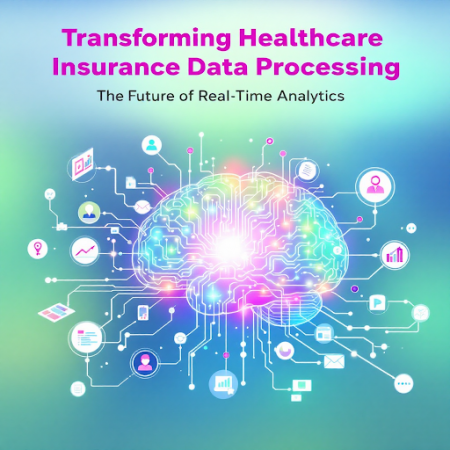
Healthcare insurance companies are facing an unprecedented surge in data from claims submissions and provider networks to member portals and wellness apps. In his research, Shashidhar Solige examines the technologies revolutionizing how insurers manage and process this data. This article highlights innovations in cloud-native architecture, real-time analytics, and AI that are reshaping the insurance landscape.
Growing Demand for Scalable Insurance Data Solutions
Insurance data is growing at a 36% annual rate, overwhelming legacy systems. Traditional batch processing creates bottlenecks in claims resolution, fraud detection, and policy updates. Cloud-native platforms address these challenges through distributed computing, containerization, and microservices offering insurers scalable, secure, and efficient data processing infrastructure. Insurers can now adapt faster to policyholder needs, regulatory changes, and market dynamics by leveraging these modern infrastructures. This agility enhances competitiveness and improves member satisfaction through faster service delivery.
Cloud-Native Architectures: Modernizing Insurance Systems
Cloud-native systems break away from monolithic designs by using microservices that can scale independently. This modular approach improves claims processing and policy management. Orchestration tools like Kubernetes enhance performance and resilience, while distributed storage systems ensure high availability of member and provider data, enabling real-time responsiveness. Such systems also allow insurers to deploy updates faster, reducing service downtime and improving customer satisfaction.
Event-Driven Processing: Enabling Instant Claims Insight
Traditional systems rely on batch uploads and delayed decision-making. In contrast, event-driven architectures treat actions like a submitted claim or a member update as real-time events. This shift empowers insurers to respond instantly to high-priority transactions. Technologies such as Apache Kafka and Amazon Kinesis allow seamless event stream integration across platforms.
Serverless Computing: Streamlining Data Transformation
Serverless models let insurers process data dynamically, without managing infrastructure. This flexibility is vital for handling variable workloads like spikes during open enrollment periods. Serverless tools are also effective in converting legacy formats into modern standards such as HL7 or X12, enhancing interoperability and simplifying regulatory reporting.
AI and Machine Learning: Powering Smarter Insurance Decisions
AI and machine learning are central to modern insurance operations. From predicting high-cost claims to detecting fraud patterns, these technologies improve accuracy and efficiency. AI tools analyze historical data to assess member risk in real-time, while NLP converts unstructured claim notes into actionable insights, helping underwriters and auditors make informed decisions. As AI becomes more sophisticated, it is also driving better customer engagement through chatbots and virtual assistants.
Security and Compliance in Cloud-Based Insurance
With data moving to the cloud, strong security measures are essential. Encryption, access control, and automated compliance checks ensure regulatory alignment. Advanced methods like federated learning and differential privacy protect member data even during analytics processing, maintaining trust and reducing risk. These frameworks allow organizations to innovate without compromising data privacy.
Edge-Cloud Integration: Enhancing Member Services
Combining edge computing with cloud systems helps insurers process data close to the source such as mobile apps or in-clinic devices. This reduces latency and enables faster service delivery, especially for real-time applications like eligibility checks or instant claim pre-approvals. It also enhances member engagement by supporting seamless, always-on digital experiences across devices.
Future Trends in Insurance Data Processing
The future of healthcare insurance will be shaped by AI, blockchain, and decentralized platforms. Governance frameworks will support secure and interoperable data sharing. These advancements will help insurers reduce costs, improve compliance, and deliver personalized services at scale. Innovation will become a continuous process rather than a one-time transformation.
In conclusion, Shashidhar Solige's work illustrates how cloud-native technologies, real-time analytics, and AI are redefining healthcare insurance. As insurers embrace these innovations, they unlock new levels of efficiency, security, and member satisfaction. The future lies in leveraging smart infrastructure to deliver faster, more personalized, and compliant insurance solutions.









